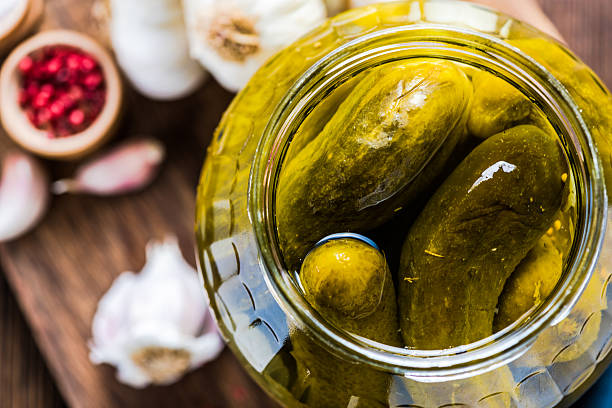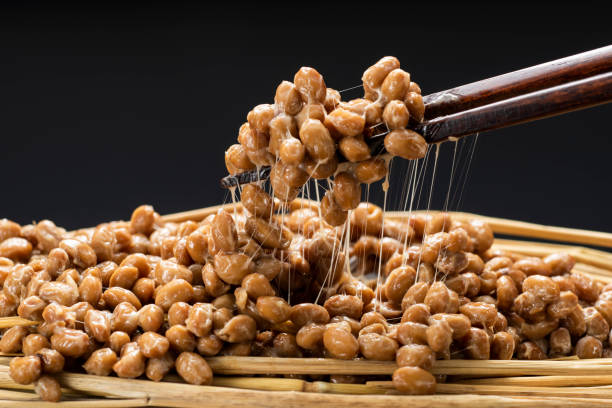The Art of Fermentation: A Guide to Making Your Own Pickles, Kimchi, and Other Fermented Foods
Introduction
Fermentation is a process of preserving food by using microorganisms to break down carbohydrates. This process can create a variety of delicious and nutritious foods, such as pickles, kimchi, sauerkraut, and yogurt.
Fermented foods are not only delicious, but they are also good for your health. They are a good source of probiotics, which are live bacteria that are beneficial for gut health. Probiotics can help to improve digestion, boost the immune system, and reduce the risk of some chronic diseases.
In this blog post, we will explore the art of fermentation. We will discuss the different types of fermented foods, how to make them, and the health benefits of eating fermented foods.
Types of Fermented Foods
There are many different types of fermented foods, each with its own unique flavor and texture. Some of the most popular types of fermented foods include:
* Pickles: Pickles are made by fermenting cucumbers in a brine solution. They are a good source of probiotics and vitamin K.

* Kimchi: Kimchi is a Korean dish made by fermenting cabbage with a variety of spices. It is a good source of probiotics, vitamin C, and fiber.
* Sauerkraut: Sauerkraut is made by fermenting cabbage with salt. It is a good source of probiotics, vitamin C, and potassium.

* Yogurt: Yogurt is made by fermenting milk with bacteria. It is a good source of probiotics, calcium, and protein.
* Tempeh: Tempeh is made by fermenting soybeans with a mold called Rhizopus oligosporus. It is a good source of protein, fiber, and iron.
* Miso: Miso is a Japanese paste made by fermenting soybeans with koji mold and salt. It is a good source of probiotics, protein, and fiber.
* Natto: Natto is a Japanese dish made by fermenting soybeans with Bacillus subtilis. It has a strong flavor and a sticky texture. It is a good source of protein, fiber, and vitamin K2.
How to Make Fermented Foods
Making your own fermented foods is a relatively easy process. The basic steps are:
1. Choose the type of fermented food you want to make.
2. Gather the ingredients and equipment you will need.
3. Prepare the ingredients.
4. Ferment the food.
5. Store the food.
The specific steps for making each type of fermented food will vary. However, there are some general tips that apply to all fermented foods:
* Use high-quality ingredients. The quality of the ingredients will affect the taste and quality of the finished product.
* Use clean equipment. This will help to prevent the growth of harmful bacteria.
* Follow the instructions carefully. Fermentation is a delicate process, and it is important to follow the instructions carefully to avoid problems.
Health Benefits of Fermented Foods
Fermented foods are good for your health for a number of reasons. They:
* Improve digestion: Probiotics in fermented foods can help to improve digestion by balancing the gut microbiota.
* Boost the immune system: Probiotics can also help to boost the immune system by fighting off harmful bacteria and viruses.
* Reduce the risk of chronic diseases: Fermented foods have been linked to a reduced risk of chronic diseases such as heart disease, stroke, and type 2 diabetes.
Conclusion
Fermentation is an ancient process that has been used to preserve food for centuries. It is also a great way to improve your health. If you are looking for a delicious and nutritious way to add more fermented foods to your diet, try making your own at home.
Here are some additional tips for making fermented foods:
* Start with a small batch. This will help you to troubleshoot any problems that may arise.
* Be patient. Fermentation is a slow process. It can take several days or weeks for the food to ferment properly.
* Have fun! Fermenting foods can be a creative and rewarding experience.
I hope you enjoyed this blog post about the art of fermentation. If you have any questions, please feel free to leave a comment below.
fermentation, fermented foods, probiotics, pickles, kimchi, sauerkraut, yogurt, tempeh, miso, natto
#fermentation #fermentedfoods #probiotics #pickles #kimchi #sauerkraut
#yogurt #tempeh #miso #natto #guthealth #healthyfood #healthyeating





